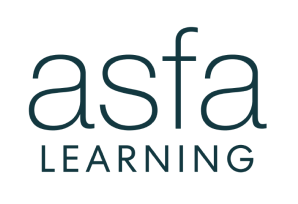18 August 2015
Increase in cost of living and changes to Age Pension means Australians need to save more in super: ASFA Retirement Standard June quarter
An Australian couple will need to save $130,000 more for a comfortable retirement following changes to the Age Pension and increases in the cost of living, according to the most recent ASFA Retirement Standard.
The ASFA Retirement Standard, released today by the Association of Superannuation Funds of Australia (ASFA), notes that recent changes to the Age Pension means test, together with increases in the cost of living and life expectancy will have an impact on the savings people will need to live a comfortable retirement. ASFA now estimates that Australians will need a super balance at retirement of $640,000 for a couple and $545,000 for a single, an increase of $130,000 and $115,000 respectively from previous estimates.
The June quarter figures indicate a modest rise in the cost of living for retirees, with couples aged around 65 living a comfortable retirement needing to spend $58,784 per year and singles $42,861, a respective 0.6 per cent and 0.7 per cent increase on the previous quarter. Budgets for older retirees increased by 0.8 per cent at the comfortable level and by 0.7 per cent at the modest level.
“A combination of increasing cost pressures, increasing life expectancy and the recently legislated changes to the Age Pension means test have had an impact on the estimated savings Australians will need to live a comfortable retirement,” explained Pauline Vamos, CEO, ASFA.
“In particular, adjustments to the taper rate and thresholds for the assets test will impact how people plan to fund their retirement. While some individuals with relatively low retirement savings will receive a small increase in their Age Pension after 1 January 2017, others will receive a lower Age Pension, or none at all, until they run down their superannuation. As a result, many individuals and couples will require higher levels of private savings for a comfortable standard of living in retirement.
“If there are further increases to the eligibility age for the Age Pension beyond what is already legislated and a lower indexation factor is applied to future increases in the Age Pension, those retirement savings targets will necessarily increase further.”
The most significant price rises affecting the cost of living for retirees this quarter are automotive fuel (+12.2 per cent) and medical and hospital services (+4.5 per cent). The most significant offsetting price falls this quarter are domestic holiday travel and accommodation (-5.4 per cent) and pharmaceutical products (-1.8 per cent).
There have been substantial increases in the price of automotive fuel over 2015, with increases in February (+5.1 per cent), March (+10.3 per cent), April (+0.2 per cent), May (+3.5 per cent) and June (+2.7 per cent).
The main contributor to the rise in health-related costs in the June quarter was medical and hospital services (+4.5 per cent). The rise was due to substantial increases in private health insurance premiums from 1 April, as well as the annual indexation of the Private Health Insurance rebate effective from 1 April.
Over the last twelve months, the food and non-alcoholic beverages group rose 1.3 per cent. The main contributors to the rise were restaurant meals (+2.1 per cent) and take away and fast foods (+1.7 per cent). The rise was partially offset by a fall in bread (-7.6 per cent).
“Given the increasing level of super savings that the average Australian will require at retirement, ASFA considers that there is a strong case to increase the compulsory rate of superannuation contributions to 12 per cent of wages as soon as possible. Additionally, many individuals may want to consider making voluntary contributions. These are generally tax advantaged and the earlier you can put money away, the more you will benefit from the effects of compound interest.
“A useful thing you can do is get in touch with your superannuation fund to find out what options are available to you, so that you have the best chance of living your post-work years free from major financial worries,” Ms Vamos concluded.
Table 1: Budgets for various households and living standards for those aged around 65 (June quarter 2015, national)
| Modest lifestyle | Comfortable lifestyle | |||
|---|---|---|---|---|
| Single | Couple | Single | Couple | |
| Housing – ongoing only | $71.10 | $68.25 | $82.41 | $95.53 |
| Energy | $41.63 | $55.29 | $42.25 | $57.29 |
| Food | $77.13 | $159.76 | $110.18 | $198.32 |
| Clothing | $17.69 | $28.71 | $38.28 | $57.43 |
| Household goods and services | $26.83 | $36.38 | $75.48 | $88.43 |
| Health | $42.44 | $81.91 | $84.20 | $148.61 |
| Transport | $93.83 | $96.48 | $139.82 | $142.48 |
| Leisure | $74.00 | $110.25 | $224.25 | $307.31 |
| Communications | $9.13 | $15.99 | $25.11 | $31.96 |
| Total per week | $453.78 | $653.04 | $821.99 | $1,127.36 |
| Total per year | $23,662 | $34,051 | $42,861 | $58,784 |
The figures in each case assume that the retiree/s own their own home and relate to expenditure by the household. This can be greater than household income after income tax where there is a drawdown on capital over the period of retirement. Single calculations are based on female figures. All calculations are weekly, unless otherwise stated.
Table 2: Budgets for various households and living standards for those aged around 85 (June quarter 2015, national)
| Modest lifestyle | Comfortable lifestyle | |||
|---|---|---|---|---|
| Single | Couple | Single | Couple | |
| Housing – ongoing only | $71.10 | $68.25 | $82.41 | $95.53 |
| Energy | $41.63 | $55.29 | $42.25 | $57.29 |
| Food | $77.13 | $159.76 | $110.18 | $198.32 |
| Clothing | $17.69 | $28.72 | $38.29 | $57.42 |
| Household goods and services | $47.11 | $66.79 | $146.45 | $169.51 |
| Health | $91.67 | $142.32 | $125.54 | $200.28 |
| Transport | $39.03 | $48.79 | $43.91 | $53.67 |
| Leisure | $47.14 | $70.34 | $121.86 | $168.45 |
| Communications | $9.08 | $15.90 | $24.96 | $31.77 |
| Total per week | $441.59 | $656.15 | $735.85 | $1,032.26 |
| Total per year | $23,026 | $34,214 | $38,369 | $53,825 |
The figures in each case assume that the retiree/s own their own home and relate to expenditure by the household. This can be greater than household income after income tax where there is a drawdown on capital over the period of retirement. Single calculations are based on female figures. All calculations are weekly, unless otherwise stated.
More information
Costs and summary figures can be accessed via the ASFA website. The ASFA Retirement Standard Calculator can be used to obtain a breakdown of the Retirement Standard budgets for each state. Australians can find out more about superannuation on the independent Super Guru website.
ASFA is the peak policy, research and advocacy body for Australia’s superannuation industry. It is a not-for-profit, sector-neutral, and non-party political national organisation, which aims to advance effective retirement outcomes for members of funds through research, advocacy and the development of policy and industry best practice.





